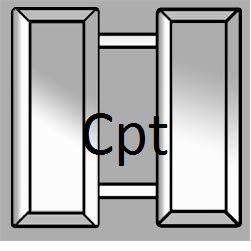Christopher A Sharp
age ~48
from Vancleave, MS
- Also known as:
-
- Christopher Aaron Sharp
- Christopher Alan Sharp
- Chris A Sharp
- Christoph A Sharp
- Ricky Sharp
- Phone and address:
-
19525 Old River Rd, Ocean Springs, MS 39565
2288264554
Christopher Sharp Phones & Addresses
- 19525 Old River Rd, Ocean Springs, MS 39565 • 2288264554
- 5800 Wooded Acres Rd, Ocean Springs, MS 39565 • 2288264893
- Vancleave, MS
- San Antonio, TX
- San Angelo, TX
- Callaway, MD
Specialities
Personal Injury Law
Medicine Doctors

Christopher Sharp
view sourceSpecialties:
General Practice
Work:
Stanford Health Internal Medicine
211 Quarry Rd, Palo Alto, CA 94304
6507236028 (phone), 6504987750 (fax)
211 Quarry Rd, Palo Alto, CA 94304
6507236028 (phone), 6504987750 (fax)
Education:
Medical School
Dartmouth Medical School
Graduated: 1998
Dartmouth Medical School
Graduated: 1998
Conditions:
Alopecia Areata
Anxiety Phobic Disorders
Attention Deficit Disorder (ADD)
Bronchial Asthma
Diabetes Mellitus (DM)
Anxiety Phobic Disorders
Attention Deficit Disorder (ADD)
Bronchial Asthma
Diabetes Mellitus (DM)
Languages:
English
Description:
Dr. Sharp graduated from the Dartmouth Medical School in 1998. He works in Palo Alto, CA and specializes in General Practice. Dr. Sharp is affiliated with Stanford Hospital.

Christopher D. Sharp
view sourceSpecialties:
Anesthesiology
Work:
UT Regional One PhysiciansUT Medical Group Anesthesiology
877 Jefferson Ave STE 601, Memphis, TN 38103
9014485893 (phone), 9014485540 (fax)
877 Jefferson Ave STE 601, Memphis, TN 38103
9014485893 (phone), 9014485540 (fax)
Languages:
English
Description:
Dr. Sharp works in Memphis, TN and specializes in Anesthesiology. Dr. Sharp is affiliated with Methodist University Hospital and Regional One Health.

Christopher Stephen Sharp
view sourceUs Patents
-
Integrated System For Controlling Diesel Engine Emissions
view source -
US Patent:6615580, Sep 9, 2003
-
Filed:Sep 24, 2001
-
Appl. No.:09/961442
-
Inventors:Magdi K. Khair - San Antonio TX
Cynthia C. Webb - San Antonio TX
Gordon J. Bartley - San Antonio TX
Christopher A. Sharp - San Antonio TX -
Assignee:Southwest Research Institute - San Antonio TX
-
International Classification:F01N 300
-
US Classification:60286, 60274, 60285, 60288, 60311
-
Abstract:A method for controlling diesel engine emissions is disclosed. The diesel engines exhaust system has a diesel particulate filter (DPF) and a lean NO trap (LNT). The DPF is a filter and is monitored to determine the need for regeneration. The LNT is monitored to determine the need for regeneration or desulfurization. A fuel injector is used to inject fuel upstream of the LNT under certain conditions, and a bypass may be used to bypass exhaust around the DPF to provide richer or hotter exhaust to the LNT. The sensor outputs and controls for providing the appropriate heat or fuel mix for regeneration and desulfurization may be controlled with enhancements to existing engine control circuitry.
-
Integrated Method For Controlling Diesel Engine Emissions In Crt-Lnt System
view source -
US Patent:6718757, Apr 13, 2004
-
Filed:Jan 21, 2003
-
Appl. No.:10/347722
-
Inventors:Magdi K. Khair - San Antonio TX
Cynthia C. Webb - San Antonio TX
Gordon J. Bartley - San Antonio TX
Christopher A. Sharp - San Antonio TX -
Assignee:Southwest Research Institute - San Antonio TX
-
International Classification:F01N 300
-
US Classification:60286, 60274, 60276, 60285, 60288, 60295, 60297
-
Abstract:A method for controlling diesel engine emissions is disclosed. The diesel engines exhaust system has a NO oxidation catalyst, a diesel particulate filter (DPF), and a lean NO trap (LNT). The DPF is monitored to determine the need for regeneration. The LNT is monitored to determine the need for regeneration or desulfurization. A fuel injector is used to inject fuel upstream of the LNT under certain conditions, and a bypass may be used to bypass exhaust around the oxidation catalyst to provide richer or hotter exhaust to the LNT.
-
Noreduction System For Diesel Engines, Using Hydrogen Selective Catalytic Reduction
view source -
US Patent:7135153, Nov 14, 2006
-
Filed:Mar 7, 2002
-
Appl. No.:10/093199
-
Inventors:Gordon James Johnston Bartley - San Antonio TX, US
Christopher Alan Sharp - San Antonio TX, US -
Assignee:Southwest Research Institute - San Antonio TX
-
International Classification:B01D 53/34
-
US Classification:422168
-
Abstract:An emission control system for reducing NOin the exhaust of a diesel engine. A partial oxidation system receives diesel fuel from the engine's fuel tank and partially oxidizes the diesel fuel into hydrogen. The hydrogen is then introduced into the main exhaust line and the hydrogen-enhanced exhaust is delivered to a hydrogen selective catalytic reduction unit, which uses the hydrogen to convert the NOto nitrogen.
-
Hydrogen Selective Catalytic Reduction For No
view source -
US Patent:7163668, Jan 16, 2007
-
Filed:Feb 27, 2004
-
Appl. No.:10/788508
-
Inventors:Gordon James Johnston Bartley - San Antonio TX, US
Christopher Alan Sharp - San Antonio TX, US -
Assignee:Southwest Research Institute - San Antonio TX
-
International Classification:B01D 53/56
-
US Classification:4232391
-
Abstract:An emission control system for reducing NOin the exhaust of a diesel engine. A partial oxidation system receives diesel fuel from the engine's fuel tank and partially oxidizes the diesel fuel into hydrogen. The hydrogen is then introduced into the main exhaust line and the hydrogen-enhanced exhaust is delivered to a hydrogen selective catalytic reduction unit, which uses the hydrogen to convert the NOto nitrogen.
-
Exhaust Gas Recirculation System With Control Of Egr Gas Temperature
view source -
US Patent:7195006, Mar 27, 2007
-
Filed:Nov 29, 2005
-
Appl. No.:11/288891
-
Inventors:Magdi K. Khair - San Antonio TX, US
Yiqun Huang - San Antonio TX, US
Christopher A. Sharp - San Antonio TX, US
Cynthia C. Webb - San Antonio TX, US -
Assignee:Southwest Research Institute - San Antonio TX
-
International Classification:F02M 25/07
F02B 47/08
F02B 33/44
F28F 27/02 -
US Classification:12356812, 606052
-
Abstract:A method and system for controlling the temperature of recirculated exhaust gas in an exhaust gas recirculation (EGR) system, such as those used in connection with diesel engines. An EGR loop (which may be either a high pressure loop or a low pressure loop) has a dual-leg segment with an EGR cooler on one leg and an EGR heater on the other leg. By means of a valve, the EGR gas may be diverted to either one leg or the other, thereby providing either cooled or heated EGR gas to the engine.
-
Noreduction System For Diesel Engines, Using Hydrogen Selective Catalytic Reduction
view source -
US Patent:7357900, Apr 15, 2008
-
Filed:Sep 6, 2006
-
Appl. No.:11/470413
-
Inventors:Gordon James Johnston Bartley - San Anonio TX, US
Christopher Alan Sharp - San Antonio TX, US -
Assignee:Southwest Research Institute - San Antonio TX
-
International Classification:B01D 50/00
-
US Classification:422168
-
Abstract:An emission control system for reducing NOin the exhaust of a diesel engine. A partial oxidation system receives diesel fuel from the engine's fuel tank and partially oxidizes the diesel fuel into hydrogen. The hydrogen is then introduced into the main exhaust line and the hydrogen-enhanced exhaust is delivered to a hydrogen selective catalytic reduction unit, which uses the hydrogen to convert the NOto nitrogen.
-
No Augmentation In Exhaust Gas Simulation System
view source -
US Patent:7550126, Jun 23, 2009
-
Filed:Jan 25, 2007
-
Appl. No.:11/627122
-
Inventors:Cynthia C. Webb - San Antonio TX, US
Christopher A. Sharp - San Antonio TX, US -
Assignee:Southwest Research Institute - San Antonio TX
-
International Classification:C01B 21/20
G05D 7/00 -
US Classification:423385, 423400, 423402, 423403, 423405, 422105, 422107, 73 2331, 7311401, 7311802
-
Abstract:Various methods and systems for augmenting the amount of NOin the exhaust of an exhaust flow simulation system. These methods and system can be “combustion” or “post combustion”. A combustion embodiment injects a nitrogen-containing compound (doping agent) into the burner, so that it mixed and combusted with the fuel.
-
Control Of Scr System Having A Filtering Device
view source -
US Patent:8001769, Aug 23, 2011
-
Filed:Aug 20, 2007
-
Appl. No.:11/892132
-
Inventors:Zhiyong Wei - Chicago IL, US
Theodore M. Kostek - San Antonio TX, US
Christopher Alan Sharp - San Antonio TX, US -
Assignee:Caterpillar Inc. - Peoria IL
-
International Classification:F01N 3/00
-
US Classification:60286, 60274, 60284, 60295, 60301, 60285
-
Abstract:An emissions control system is disclosed. The emissions control system may have a power source that creates a flow of exhaust and a filtering device that receives the flow of exhaust. A first sensor may be located at or upstream of the filtering device, the first sensor being configured to measure a first temperature, and an SCR catalyst may be located downstream of the filtering device. The emissions control system may also have an injector configured to inject a reduction agent into the flow of exhaust in the presence of the SCR catalyst. The emissions control system may further have a controller in communication with the first sensor. The controller may be configured to predict a change in an ability of the SCR catalyst to store reduction agent using a measured change in the first temperature and adjust the injector according to the predicted change in the storage ability of the SCR catalyst.
Name / Title
Company / Classification
Phones & Addresses
OHIO NATIONALS TRAVEL BASEBALL
C SHARP SOLUTIONS LLC
Resumes

Christopher Sharp
view source
Christopher Sharp
view source
Picker
view sourceWork:
Starbucks Roasting and Distribution
Picker
Picker

Christopher Sharp
view source
Actor
view sourceWork:
Actor

Christopher Sharp
view sourceLocation:
United States
License Records
Christopher Aaron Sharp
Address:
19501 Old Riv Rd, Vancleave, MS 39565
License #:
A4994131
Category:
Airmen
Isbn (Books And Publications)


Lawyers & Attorneys

Christopher Sharp - Lawyer
view sourceSpecialties:
Personal Injury Law
ISLN:
903815015
Admitted:
1989
University:
Southern Methodist University, B.A., 1986
Law School:
John Marshall Law School, J.D., 1989

Christopher Sharp
view source
Christopher Ryan Sharp
view source
Christopher Rave Sharp
view source
Christopher P Sharp
view source
Christopher Sharp Binnings
view source
R Christopher Sharp
view source
Christopher Sharp
view source
Christopher Sharp
view sourceYoutube
Classmates

Christopher Sharp
view sourceSchools:
Holy Family School Cincinnati OH 1980-1988, Elder High School Cincinnati OH 1988-1989, Hughes Center Cincinnati OH 1989-1990
Community:
Thomas Sweeney, Lester Abner, Karen Fielding

Christopher Sharp (Yeager)
view sourceSchools:
Rainbow Elementary School Ansbach SC 1980-1982, Logan Elementary School El Paso TX 1981-1984, Basset Junior High School El Paso TX 1984-1985, Sego Middle School Augusta GA 1987-1989
Community:
Pat Gunter, Tony Parris

Christopher Sharp
view sourceSchools:
Lacombe Junior High School Lacombe Azores 1998-2001
Community:
Irene Obst, Gordon Goodbrand, Lorna Fisher

Christopher Sharp
view sourceSchools:
Brewer High School Somerville AL 2000-2004
Community:
Tina Lewis, Jan Tillman, Benny Dudley

Christopher Sharp
view sourceSchools:
Vidor High School Vidor TX 1978-1982
Community:
Cristal Dorsey, Scott Davis

Christopher Sharp
view sourceSchools:
Fairhill High School Dallas TX 1983-1987
Community:
Mark Freytag

Christopher Sharp
view sourceSchools:
Duncan U. Fletcher High School Jacksonville Beach FL 1997-2001
Community:
Albert Forrest, Becky Kem

Christopher Sharp
view sourceSchools:
Trimont Christian Academy Franklin NC 2000-2004
Community:
Leigh Messer, Sarah Hubbs, Amy Zellman, Amy Brown, Joseph Garviso, Charles Brownne
Plaxo

Christopher M Sharp
view sourceGuernsey, Channel Islands

Christopher Sharp
view source
Christopher Sharp
view sourceVP of Sales at Softmart

Christopher Ryan Sharp
view sourceCatonsville, MD
Flickr
Googleplus

Christopher Sharp
Work:
Xcepthys Entertainment - CEO (2012)
Education:
Central Lakes College - Audio Production
Relationship:
Single

Christopher Sharp
Education:
Central Lakes College - Audio Production
Tagline:
I'm a modern human being.
Bragging Rights:
Audition for American Idol-4th round & X-Factor-5th round

Christopher Sharp
Work:
Water Pik, Inc. - Manufacturing Analyst
Education:
University of Northern Colorado - Economics
Relationship:
Married

Christopher Sharp
Education:
Recording workshop

Christopher Sharp
Education:
George P. Butler High School

Christopher Sharp
Work:
MILITARY

Christopher Sharp
About:
Hey hope you like the videos I post! Thumbs up!
Tagline:
I love all types of games!

Christopher Sharp
About:
"When we are no longer able to change a situation we are challenged to change ourselves."
Get Report for Christopher A Sharp from Vancleave, MS, age ~48













